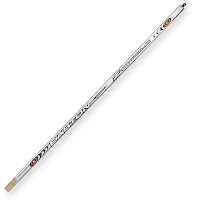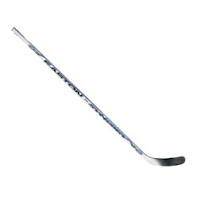Archive
Bauer Roller Hockey Skates
It’s always a good time to get rolling! Come in and check out our great selection of Bauer roller hockey skates. Perfect for training year round or to dominate the roller hockey circuit
NXG Stick
Updated version of the #1 high school composite stick! Constructed For the power player.
Power Never Quits!
New Bauer RE-AKT
The new Bauer REAKT hockey helmet is the first helmet to not only address impact concussions but also rotational concussions.
Revolutionary Technology For How The Game Is Played.
Strap a Rocket to the Puck
CCM Hockey and TaylorMade Golf, share the same passion for delivering high performing equipment played by the most demanding athletes, using technical and innovative approaches. As a result, CCM has entered into a multi-year collaboration aimed at redefining the hockey stick with game changing technologies. Get ready to strap a rocket to the puck!
The first expression of this partnership is the new CCM RBZ Composite Hockey Stick powered by TaylorMade. Used by NHL’ers Gabriel Landeskog and Ryan Nugent-Hopkins, the revolutionary SpeedBlade provides a hot blade face which helps rocket the puck off the blade. The RBZ features key innovations that will truly classify this stick in a category of its own. Improved weight distribution produces a faster swing for a faster puck speed while the constant stiffness profile all the way through the shaft allows for a customized kick point for maximum shot loading. With the innovation that the RBZ brings to the game, the face of hockey sticks has changed forever.
Experience the Whiteout
Why blend in when you can stand out? The new Bauer Limited Edition Supreme ONE.9 and Supreme ONE.6 skates and Vapor 5.0 and 4-Roll gloves are available now. As the name implies these are “limited” and when they’re gone, they’re gone so don’t delay!
Ultimate October Goalie Sale
Thursday October 25th-Sunday October 28th we will be having our Scary Good Goalie Equipment Sale. Since it’s Halloween time all mask will be on sale (naturally). Also, all leg pads will be on sale! We’ll be giving you 20% off goalie sticks as well!
For this sale all Brian’s Goalie Equipment will be 20% off (in stock only)! This is a great opportunity to get a good deal on some of the lightest, most protective gear in the industry! Also, on Saturday October 27th meet Kelly Hayes sales rep for Brian’s! She is one of the most knowledgeable sales reps in the business (and accomplished goalie) and would love to answer any of your Brian’s questions!
*Some restrictions may apply including manufacturers M.A.P.
So, what's new? In hockey, 2007, something nearly every day
If I had to use one word to describe the hockey equipment industry in 2007 it would be corporate. I guess what I’m saying is gone are the medium size companies that moved the industry (well, actually to me they were huge) when I started nearly 20 years ago replaced by multi brand conglomerates where, sometimes although not always, hockey is a very, very small part of what they do. So, what’s the result? Well, I guess just like every other business; to make money. I have no issue with that and in fact anyone who’s not in business to make money is a darned fool. However, the newest way of generating sales is where I have issue. The new way of getting products on retailers shelves is constant introduction of new models, new color variations, and “limited edition” versions of existing products. I think for the consumer, it’s like Christmas every few months when the next big thing hits but for the retailer it’s a nightmare. Honestly, I think in the end it’s not good for anyone.
Take a look at the 2008 items already available or scheduled to land soon (by 2008 product I typically mean product that was not listed in any 2007 catalogues): The RBK O Stick, RBK 7K Crosby stick, RBK 7K Sickick 08 stick, CCM Vector 10.0 08 stick, Nike Bauer Vapor XXXX stick, Nike Bauer Vapor XXV stick, Nike Bauer Vapor XVI stick, Easton Stealth S17 stick, Mission Fuel Ti Pro stick, TPS Summit 7 leg pad, catcher, and blocker, Nike Bauer One95 Leg pads, catcher and blocker, and on and on. What that means is all of these were available just recently or will be just before holidays. So, where’s the problem? There’s a thing called buyers remorse which means right after you purchase what you understand to be the newest, hottest product out there only for it to be one upped weeks later. I can sit here and tell you all thats wrong with this (like killing product loyalty) but this is how things will be from here on out.
I have more a problem with limited edition colors etc. Every year someone from one of our suppliers will come to me with a “hot new color” of a popular stick, skate, etc. I typically rebuke them as I’m more a substance over style sort of guy and won’t make inventory risks on something based on color if the old color worked just fine. Sometimes I can get away with it, sometimes my hand is forced. I definitely take an old school approach to hockey. When I played the player with the newest stuff that stood out was the guy you went after. I always considered hockey players to be tough guys. The idea of someone playing hockey not buying, say, a stick because they want the green and not the red, or sitting at a computer terminal designing their own stick colors with their name on it, that just didn’t happen. It’s a brave new world people.
What’s my bottom line? I have no idea. As a business man, I think it’s a negative trend as (just look around all the usual websites) it causes all sorts of overages and markdowns which means many of the same retailers will have neither the space nor money to get the next new thing. It’s what we call a self fulfilling prophecy. For the parent of a hockey player, it’s also a nightmare if you don’t have a money tree growing in your backyard. BUT, if your a kid who eats, drinks, and sleeps hockey, well, it’s the best of times. Well, that is until that skate or stick you fell in love with has been replaced by one you hate…welcome to hockey in 2007
Choose your weapon part 3; How and why composite sticks conquered hockey
Wow, hockey season really caught up on me and I’ve been derelict in my blogging duties. So, I present to you the third and final, highly anticipated (ok, it’s actually gone on at least 2 blogs too many) part of our discussion on composite hockey sticks (and as there have been no real comments it’s more a lecture then a conversation). We’ve covered the origins, the present, and the most important features in selecting a stick so let’s finish it off with popular misconceptions and rumors and, in the end, are they really worth the money.
1) Composite sticks last longer then wood sticks- Negative. A composite stick MAY last longer then a wood stick but can break just as quickly. The bottom line is hockey is a rough sport and sticks are going to break. In fact, they HAVE to break for safety reasons alone. The thought of an unbreakable stick (from a business standpoint it will happen right around the time of the 100 miles to the gallon engine) is scary in the amount of damage it could cause to the skater or an opponent could be significant.
2) More expensive composite sticks last longer then cheaper composite sticks- Wrong. My experience is most of the new, lower priced, lower performance sticks last quite a bit longer then the premium sticks. This is because they have a higher fiberglass content. On the other hand they play like a fiberglass stick…and that’s not a compliment.
3) You will get off a much better shot with a composite stick-Yes and no. It will always be the shooter not the stick. But, on a slapper or one-timer, the same player will typically see increased velocity with a high performance composite stick. That and lighter weight and better consistency is what you buy a composite stick for. Period. As far as passing and wristers many feel wood still works better but most importantly no matter what the material those 2 skills are more affected by the proper lie, flex and curve.
4) The price on premium composite sticks is going to come down- I don’t see it. The relatively high price of the RBK O Stick is proof of this. The bottom line is most manufacturers have moved stick production overseas to keep the cost from increasing more. Realistically, a lot of $100 and down sticks you now see use the technology that the $150 and up sticks used less then 5 years ago so you can get a decent stick at a decent price now. No, there is only one way the price of the premium sticks is coming down…get rid of the warranty. Yes, yes, I know, without that safety blanket people will be rioting in the streets but hear me out. The warranty was the most ill conceived notion ever. When the original composite sticks came out they needed the warranty to sell the sticks as the average wood stick was about $22. Ever since then the companies have been forced to roll the cost of the warranty into the price of the sticks. Company’s like Easton spend well over $1,000,000 a year in return postage alone and if you don’t think that cost, plus the cost of the replacement itself and the issues with falsified receipts (note the new authentication system on the new Easton Synergy Elite) have all driven the cost upwards. My idea? Offer a non-warranty stick for 1/3 to 1/2 less and let people take their chances. But, hey, what do I know
5) You can “save” a composite 1-piece stick by cutting the broken blade off and “repairing it”- Totally bad idea. If you want to try and get more out if it, flip it over and put a $20 or less wood blade in it and use it as a back up or pond stick. Simply put once it’s broken, it’s broken and to invest any money back in it is foolhardy. These are precision tools and altering them in any way changes everything about them. I know it’s a bitter pill to swallow but it’s the cold, hard, truth
So, in conclusion, are premium composite sticks worth their price? Hard to say. I think for the reduced weight, consistency, and added velocity on certain shots they are worth every penny for a high level player. If you are buying one for durability, they are NOT worth it. They are quite simply the next evolution in the hockey stick much in the way composite tennis racquet’s and golf shafts and heads have changed those sports. When people ask me I tell the, between $150-$200 for a competitive player, $100-$150 for recreational and wood below that (yes there are adult composite sticks for $60-$70 but in my opinion wood plays much better). The bottom line of the whole thing is a good stick will give a good player a competitive advantage but not necessarily a better player so worry more about your shooting skills and less about the trendiest new stick
Choose your weapon part 2; How and why composite sticks conquered hockey
So, where was I? Wood sticks…aluminum shaft…Z-Bubble…OK, got it. So we reviewed where composite sticks came from now let’s talk about why they work, what’s important in selecting a composite stick that is right for you
Probably the most common question I get asked about composite sticks is what’s the most important feature when selecting a stick. When I first started in this business and wood sticks were the norm I’d tell you the order of features ranked by importance was lie, curve, flex. For composite, while I’d actually list lie as #2, it tends to go flex, curve, lie, well, in reality for most younger players it goes curve, curve, curve but I digress. Texture and weight are 2 other elements to consider but far less important in the overall scheme of things. Let’s talk about flex, lie, and curve.
Selecting the proper flex of a composite stick is probably most important. The design of the original Easton Synergy was developed with the the physics of the swing of a golf club in mind. What this meant was that the bottom of the stick should flex enough that at the top of the swing the head, or in this case the blade, should flex back well behind the shaft and your hands. When the direction is reversed and the blade catches up to the shaft the result is catapult like creating a low, hard shot. So, basically stated, a stick that is too stiff will eliminate this explosiveness. Yes, on the other hand a stick too “whippy” loses some accuracy but your really buying a composite stick for the velocity benefit so much better to err on the side of too flexible. Most sticks are rated on the original Easton scale of 85, 100, 110 flex. At it’s basest explanation, think of it as pounds per square inch. An 85 flex would take approximately 85 pounds of pressure to bend one inch etc. For our purposes the scale is simply a standard measure with 85 being more flexible then 100 etc. So, now that you’ve decided on the flex there is one more curve ball; cutting the stick to height. Every 2 inches you cut a stick will increase the relative stiffness of the stick. It is MOST important to keep this in mind before your final decision is made. Decide and what would be your ideal flex then choose the stick that, when cut to you ideal height, achieves that flex. It’s not as confusing as it may sound but as always you can consult with your local hockey shop pro.
The lie of the blade and by extension the stick itself is every important. It is literally how the blade “lies” on the ice. Simple, right? Well, back when blade heels were less rounded it was maybe the most singular element of importance in your stick. It affected your stance, the way the blade struck the puck, and whether or not you’d find pucks sneaking under your blade. As the heels and bottoms of the blades became more and more rockered the importance of lie became lost in the shuffle to the point until recent years the lie was not even printed on most composite sticks at all. Advice here? Grab a stick, figure where you would cut it, hold it like you would at that cut height, stand in a ready position and see how much “daylight” is under your blade then adjust accordingly. One problem is that typically, each curve pattern come in only one lie so you will have to weight that decision which leads us to…
Curve patterns. Quite literally this is the size and position of the curve on any given blade. position is usually named as heel, mid, or toe curve. Each position has it’s advantages and drawbacks. The curve size runs from diminutive to maximum legal size (about 3/4″) with each having it’s own set of pluses and minuses. So how do you choose? Well, typically in the States the slighter mid or heel curve reins supreme (Forsberg, Modano). My theory is that a “vanilla ice cream” curve involves a lot less risk at the high price of most stick and so they are most popular. Most pros tend towards a severe heel wedge which strikes the puck in a similar fashion to a sand wedge in golf and provides a hard accurate shot. However as there is little actual “curve” only a really skilled player can get a great wrister or pass with this kind of curve. Bottom line is simply go with what you’re comfortable with or the right balance between curve and lie (see above) that works for you.
OK, this has run on a bit but the gist of it is whether it’s a Synergy SE, RBK 9K, or Nike Bauer ONE90, whether the lightest or most durable, grip or no grip start by making sure the flex, lie, and curve are what’s right for you and the rest will fall into place.
When next we meet we’ll discuss popular myths and misconceptions and are composite sticks really worth the money. Until then may all your shots be on net!
Choose your weapon part 1; How and why composite sticks conquered hockey
Unless you playing days ended before the Great One skated his last lap around the ice then you know buying a hockey stick is no longer a simple process. With traditional wood sticks all but forgotten at the upper levels of the game we are officially in the composite stick age. With prices about to max out at around $250 for the highly anticipated RBK 9K sticks, not skates, have become the most expensive part of the game. So, how did we get here and what should you consider when purchasing a composite hockey stick? This week I’ll talk about the genesis and then we’ll talk about the good, the bad, and the ugly of purchasing a composite stick.
So, how did wood sticks end up becoming nearly extinct? Well, there are a few reasons including but not limited to the price of lumber. The average performance wood stick had jumped to over $20 and most closer to $30. Mostly it was an issue of consistency that led the revolution. The limitation of wood sticks at the highest level was you couldn’t control such variables as knots, dryness, and general quality of the raw ingredients from one stick to another. Another issue became players needing a stiffer flex often had to suffer through a stick that was heavier then desired. The first step towards composite was aluminum. If you played any time from the 80’s to mid 90’s you likely remember the aluminum shaft. This was great in that is was much lighter and consistent…well, unless it bent. Which they did. A lot. Trying to shoot straight with a bent stick is never a great idea. The n ext step was the composite shaft. The earliest versions were made through a process call pultrusion mostly used in the manufacture of boat masts. While this solved the problem of bowing and bending they had no play and were heavy. To me the stick that really changed the game was the Easton Z-Bubble shaft. The Z-Bubble incorporated a lot of golf club technology into the design figuring the swing of a club and a stick were pretty similar. What made this different was the taper at the bottom of the shaft. THIS was revolutionary. This created what was know as a focus flex region or, basically stated, an area of the stick that flexed back further and easier then the rest of the shaft keeping the head or blade behind the hands longer as well as explosive follow through. It was almost perfect except they had to deal within the boundaries of replacement blades with a square peg so they couldn’t mess with the geometry of the shaft itself too much (I know someone will mention the T-Flex shaft and blades which were really the true next step to the full composite stick but as it was generally considered a failure we’ll just skip over it). But change was just around the corner.
ext step was the composite shaft. The earliest versions were made through a process call pultrusion mostly used in the manufacture of boat masts. While this solved the problem of bowing and bending they had no play and were heavy. To me the stick that really changed the game was the Easton Z-Bubble shaft. The Z-Bubble incorporated a lot of golf club technology into the design figuring the swing of a club and a stick were pretty similar. What made this different was the taper at the bottom of the shaft. THIS was revolutionary. This created what was know as a focus flex region or, basically stated, an area of the stick that flexed back further and easier then the rest of the shaft keeping the head or blade behind the hands longer as well as explosive follow through. It was almost perfect except they had to deal within the boundaries of replacement blades with a square peg so they couldn’t mess with the geometry of the shaft itself too much (I know someone will mention the T-Flex shaft and blades which were really the true next step to the full composite stick but as it was generally considered a failure we’ll just skip over it). But change was just around the corner.
The full composite stick was the unicorn of the hockey world for several years. A lot of people will lay claim to the first full composite stick (my earliest recollection was a company called Busch which partnered up with everyone from Sherwood to Itech to get their product out there) but the hockey world simply wasn’t ready for a $200 stick. So, it was Easton, the leader in composite shafts and blades that finally broke through and quite by accident if you believe the stories. Stuck with the problem of showing around a prototype of a 1-piece composite stick that would retail at $ 150, taking pre-orders, then not being able to produce the stick for a price that would make this price a reality. So, they went back to what was one of their biggest failures…yup, the T-Flex (see, you knew I mentioned it before for a reason). The end result was what has become known as a fused 1-piece stick. Basically taking a composite shaft with an ultra-long taper ending in an extremely narrow opening inserting a composite blade with a much shorter, much narrower peg and permanently bonding them together. Yes, this was the birth of the original Synergy. Now, to say it was an overnight success would be lying as sticker shock was still in affect. However, with improved looks, increased usage at the highest levels, and tremendous positive feedback, the revolution had truly begun.
150, taking pre-orders, then not being able to produce the stick for a price that would make this price a reality. So, they went back to what was one of their biggest failures…yup, the T-Flex (see, you knew I mentioned it before for a reason). The end result was what has become known as a fused 1-piece stick. Basically taking a composite shaft with an ultra-long taper ending in an extremely narrow opening inserting a composite blade with a much shorter, much narrower peg and permanently bonding them together. Yes, this was the birth of the original Synergy. Now, to say it was an overnight success would be lying as sticker shock was still in affect. However, with improved looks, increased usage at the highest levels, and tremendous positive feedback, the revolution had truly begun.
Today there are hundreds of composite sticks on the market claiming different manufacturing processes, lightest weight, most durable etc. Several companies have even perfected the “true 1-piece” stick (not fused). But, nearly a decade later, the “mistake” Easton made in it’s latest incarnation as the Synergy Elite remains the most popular and best known composite stick in hockey













 Location:
Location:  Phone:
Phone:  Email: info@sportsetc.net
Email: info@sportsetc.net